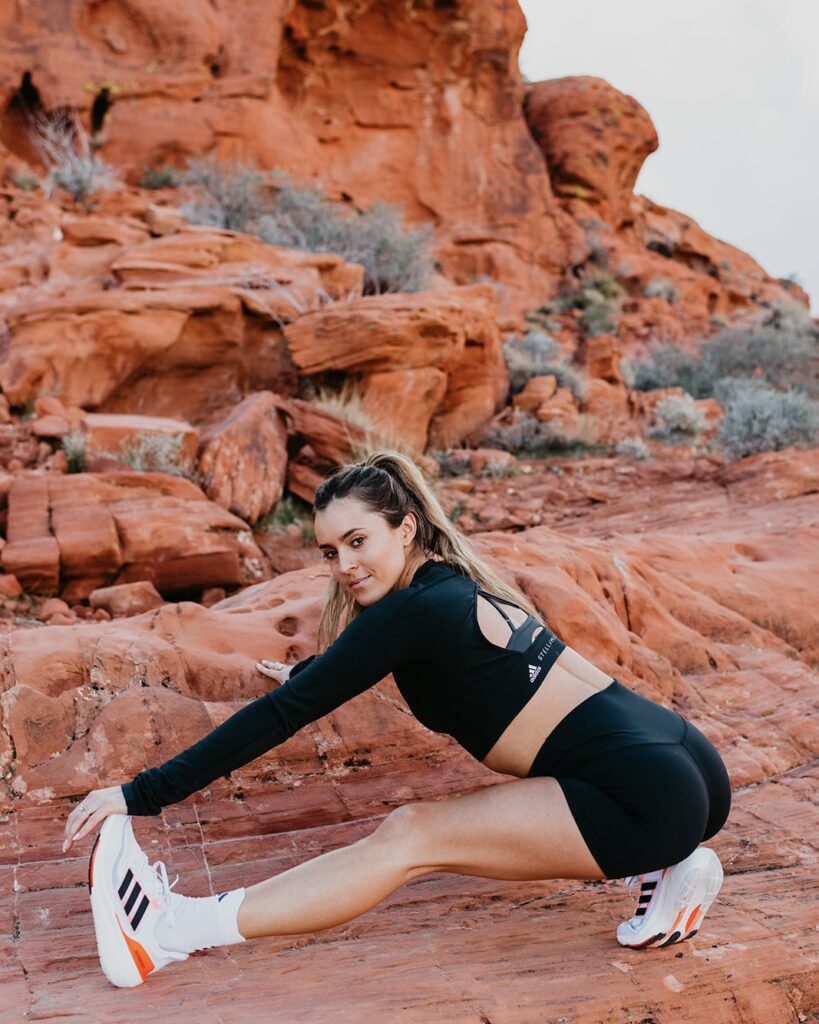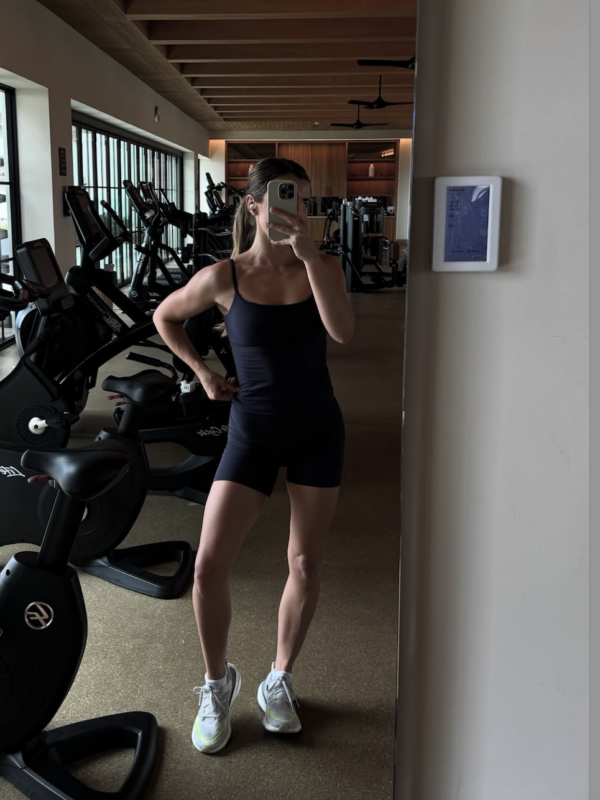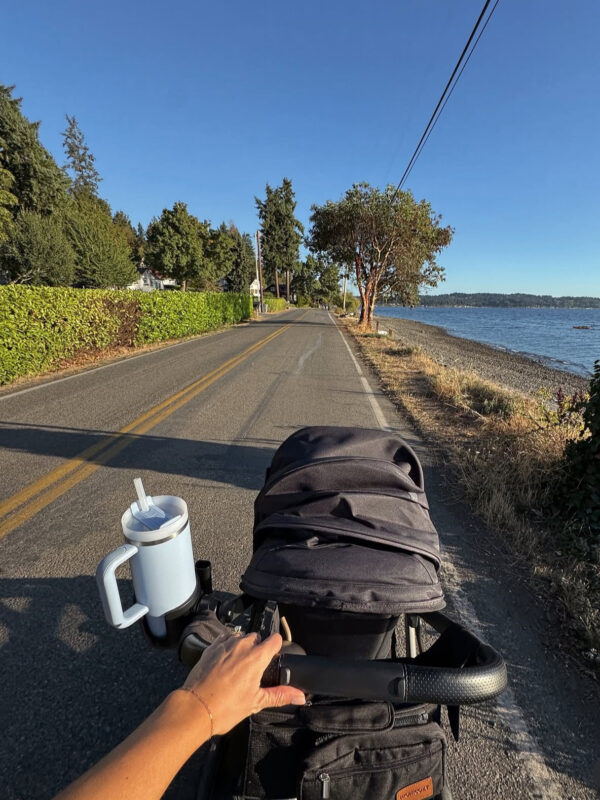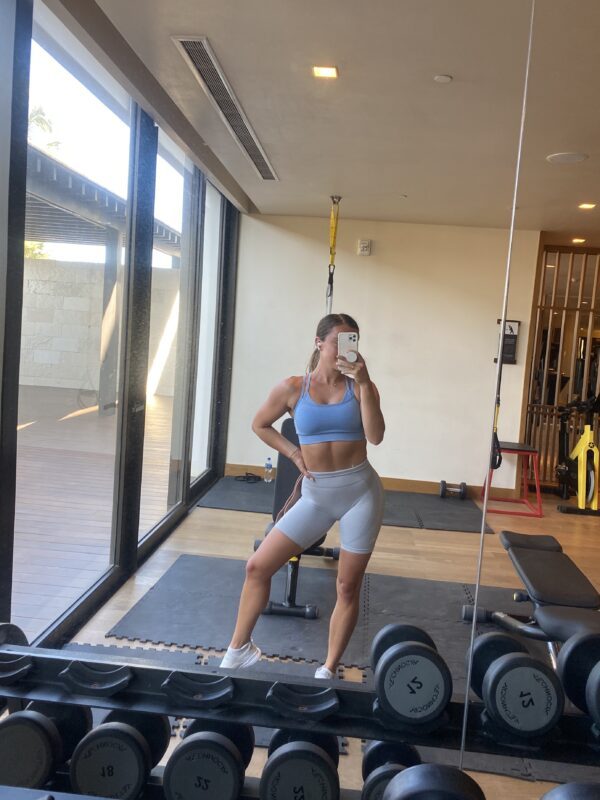
Guest post from Danielle Drossart
Aches, pains, creaky joints – We’ve likely all been there at some point. Tightness in your muscles, tendons and ligaments can occur for several reasons (progressive overload, dehydration, overuse, etc.) and thankfully, there are so many ways to prevent and aid muscle tightness. To keep this article short and sweet, I will only focus on some of my favorite ways. Assuming you are consistently following “the basics” of adequate hydration, proper form, quality nutrition *cough, cough* Rachael’s Good Eats recipes anyone??…these additional tips and tricks will hopefully be helpful reminders or unique ideas to keep you feeling limber!
MOVING YOUR BODY DOESN’T ALWAYS REQUIRE EXERCISE
Yes, adults should aim for 150 minutes of moderate to vigorous intentional exercise each week (around 30 minutes of exercise five days per week), but that amount does not mean it’s appropriate to stay seated with your leftover 9,930 minutes! Many of us spend a majority of our workday at a computer and/or seated. Why? Unless you are buckled into that seat, GET UP. Aim for one time each seated hour to get up and walk around for a couple minutes; go get water, stand outside, talk to a friend. At a minimum, just stand up and roll your neck, shoulders and wrists around, shake out your legs and take a deep breath as you look at anything but a computer or phone screen.
PROTECT YOUR JOINTS
Always keep a slight bend or flex to your joints. Regardless of whether you are working out or standing at the counter cooking, keep a slight bend in your joints to relax and slightly engage them. In other words, do not “lock” your joints by pressing them fully straight and slightly back into a hyperextension. This is especially important for your knees and elbows as these two joints are classified as hinge joints meaning their primary movements are for flexion/extension. Movement, especially forced movement, outside of their typical range can cause stress and strain potentially leading to unnecessary aches, pains and injury.
Our joints consist of ligaments (connective tissue linking bone to another bone), tendons (connective tissue linking surrounding muscle to the bone), cartilage (tissue helping protect bones from rubbing together), and fluid (lubricate and protect joints). When you lock out your knee for example, you are also starting to stretch the back ligaments of the knee whose purpose is to maintain your knee’s correct placement so this joint will function properly without pain. Additionally, locking the knee joint and pushing it slightly back places undue pressure (stress) on the front area of the knee; an area which contains the cartilage (cushion) to protect the joint bone.
PRIORITIZE RECOVERY
Use cold and heat appropriately. Ice is typically a great option for a recent injury, whereas heat is a better option for muscular and/or chronic pain. Ice is the best choice within the first 48 hours after an injury (e.g., a sprained ankle) because it reduces swelling (body’s inflammatory response) as well as pain. Ice on a specific area or taking an ice bath, can be beneficial after you have finished a more extreme workout, such as completing an extra long cardio/HIIT session or training for a marathon. Avoid using ice after the first 72 hours as icing after this initial timeframe will slow your body’s natural metabolism which is necessary for recovery.
Applying heat will help soothe stiff, sore muscles and joints as well as widen (dilate) veins to provide more blood flow and nutrients to that area. Heat works well to warm up sore muscles before light stretching or massage, and can have a relaxing effect by literally warming up and loosening the area.
SHOULD I CONTINUE TO WORKOUT WITH SORE MUSCLES?
Know thyself. Know your limits. Injury severity is linked to the amount of damage experienced by body tissue, and how long it will take to recover fully. Therefore, it is important to know how much your body can truly tolerate during workouts, and to work within that range to progress without injury. This is why following a workout program from someone you trust should be a top priority when aiming for growth and gains while still feeling your best (Shout out to our girl, Rachael DeVaux!). Become confident in listening to what your body tells you will help you understand if the tightness or soreness you feel is from muscle growth and gain, or the start of an injury. If you believe you have the start of an injury…RICE it (Rest, Ice, Compression, Elevation), reduce the impact and movement to the area, and take a few quality rest days.
BREATHING AND STRETCHING ARE VITAL
Breathe deeply and slowly to conclude a workout. One of my favorite rituals to relax, lower my heart rate, and mentally refocus after each workout, is to simply lie down (or sit) and just breathe. A yoga breathing technique I typically rely on to boost my parasympathetic activity and lower my heart rate, is called “4-7-8 breathing”. Parasympathetic system activity is also known as our “rest and digest” system and is part of our autonomic nervous system responsible for automatic body functions like heart rate, blood pressure, and sweating. Lowering heart rate more quickly by focusing on breathwork, helps alert your body that the sympathetic system (AKA “fight or flight” response) can reduce its participation since you’re no longer in a high stress mode. Practicing 4-7-8 breathing can calm you down after workouts, reduce sweating, and allow your mind to wander before you finish cooling down and stretch (Mhmmmm….stretch please!).
So, the technique goes like this:
- Keep your tongue at the roof of your mouth and jaw relaxed so you are not clenching your teeth.
- Breathe in deeply but gently through your nose into your belly (or diaphragm) for a full count of four seconds.
- Hold this deep breath for a full count of seven seconds not breathing in more, nor exhaling.
- Exhale slowly and with control over a full eight seconds so you feel you have emptied all the air from your body when you reach eight.
- Repeat this breathing technique as many times as you want! I always aim to complete three cycles at least before starting to stretch.
TIPS FOR COMBATTING MUSCLE SORENESS
- Warm up for three to five minutes before every single workout.
- Stretch your muscles, but do not force and hyperextend any joints as you do so.
- If you are feeling extra sore after a heavy workout or long week, implement a Self-Care Sunday for yourself. Take a hot bath with Epsom salt (as hot as you can tolerate with about 1-2 cups of Epsom salt) and soak for about 20 minutes. When you get out, drink 16 ounces of water + put on your favorite lotion + lightly massage and stretch any areas of soreness.
- Using a workout journal can help you track key points to reflect on your progress. Using a written journal, white board, or a phone app can be useful to track: Amount of weight used when lifting / Length of workout / Frequency of exercise / Intensity of workouts / Perceived exertion or difficulty of an exercise / Any noticeable or new aches and pains / Amount and quality of sleep.
- Modifications are your friend! Modifications to a workout has not, does not, and will not ever mean your workout is easier nor that you are not capable of doing a particular exercise. Modifications exist to allow workouts to be customizable to your body and goals. Everyone uses modifications at some point whether to accommodate for a previous injury, because they feel fatigued, or as part of their personal progress. I use modifications consistently to avoid sacrificing my form as I lift heavier weights, or if I need to catch my breath for a minute without stopping my workout. Know your body and your own needs!
From Danielle: Thanks for reading and I hope you found a few tips to try! My background is in Kinesiology and Neuroscience which I used for about six years as I worked in the medical research field at the Medical College of Wisconsin. Recently, I went back to finish graduate school to become a school psychologist and have found that my undergraduate + graduate/specialist qualifications mix well to give me a sport psychologist’s perspective.
REFERENCES
Cleveland Clinic. “How to Do the 4-7-8 Breathing Exercise.” Cleveland Clinic: Health Essentials, Cleveland Clinic, 6 Sept. 2022, health.clevelandclinic.org/4-7-8-breathing/.
International Sports Sciences Association (ISSA). “Should You Lock Your Joints When You Stretch?” www.issaonline.com, International Sports Sciences Association, 15 Aug. 2019, www.issaonline.com/blog/post/should-you-lock-your-joints-when-you-stretch
Malanga, Gerard A., et al. “Mechanisms and Efficacy of Heat and Cold Therapies for Musculoskeletal Injury.” Postgraduate Medicine, vol. 127, no. 1, Dec. 2013, pp. 57–65, https://doi.org/10.1080/00325481.2015.992719. Taylor & Francis Online.
Vierra, Jaruwan, et al. “Effects of Sleep Deprivation and 4‐7‐8 Breathing Control on Heart Rate Variability, Blood Pressure, Blood Glucose, and Endothelial Function in Healthy Young Adults.” Physiological Reports, vol. 10, no. 13, July 2022, https://doi.org/10.14814/phy2.15389. PubMed Central.
Wang, Yutan, et al. “Heat and Cold Therapy Reduce Pain in Patients with Delayed Onset Muscle Soreness: A Systematic Review and Meta-Analysis of 32 Randomized Controlled Trials.” Physical Therapy in Sport, vol. 48, no. 1, Mar. 2021, pp. 177–87, https://doi.org/10.1016/j.ptsp.2021.01.004. Elsevier.













